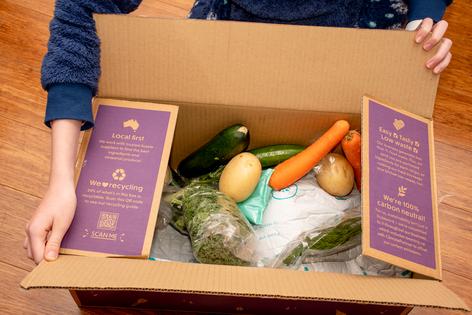Environmental Nutrition: Can meal delivery kits help support weight goals?
Well intentioned as they are, staying on course with weight goals can be challenging. It takes time and energy to plan, shop, and prepare meals that align with dietary needs in the midst of a calendar already bursting with daily demands. And what about nutrition knowledge and cooking skills? Meal delivery services can help by providing healthy meals without all of that prep and know-how. Weight loss, weight gain, weight maintenance — no matter what your weight goals, here are some points to consider if you think meal delivery might be right for you.
How it works
A meal delivery kit is a subscription service that delivers ready-to-heat and eat meals or pre- portioned ingredients for quicker home cooking right to your door. Subscribers order meal kits on the company’s website or app, choosing the number and frequency of meals and menu choices for a week or other set period of time. The customized meal kits arrive pack- aged as complete pre-cooked meals to be stored until ready to eat or packaged with meal ingredients to prepare with easy-to-follow recipes.
Convenience
“Meal delivery kits can be a great tool for supporting your health goals because they take the guesswork out of meal planning,” says Andrea Mathis, MA, RDN, LD, owner of Beautiful Eats & Things. “They typically offer balanced, portion- controlled meals that are convenient which makes it easier to stay on track,” she says. Not only are they time-saving by taking care of planning, grocery shopping, and meal prep, they eliminate the need for desperate dashes to the market or fast-food restaurant when the temptation to grab a less than healthy meal threatens to upend healthy dietary goals. All you need to do is choose which meals you want each week.
Portion control
Portion sizes can be confusing, especially when it comes to managing weight goals. Larger serving sizes of meals in restaurants and packaged foods have, over time, resulted in what is known as “portion distor- tion,” where people perceive larger than single serving portions as “normal” sized portions. This can lead to overeat- ing without realizing it. Meal kits with ready-made meals come pre-portioned, so you know you’re getting a single serving. Many services are specifically designed for weight loss, so meals may be lower-calorie, for example.
Variety
One of the best ways to stick with a dietary pattern and achieve weight goals is to keep it exciting. Eating the same foods in the same ways week after week can tempt anyone to stray off course. Meal delivery kits offer menus with many different types of flavors and cuisines, including many with global and cultural flair. Each week you can try something new, while keeping aligned with your dietary needs to support your weight goal. Trying new dishes is just as enjoyable as it is inspiring. You might discover a novel way to eat asparagus or a healthy chicken recipe to add to your favorites and prepare on your own even after your meal delivery service ends.
How to choose
With more than 300 meal delivery kit services in the U.S., there are lots of options to find the best one to support your personal goals. Mathis suggests starting by deciding what’s most important to you, such as health goals, dietary preferences, budget, or convenience. Some meal delivery services are built upon a particular dietary pattern, like plant-based, keto, high protein, or vegan. You’ll also find some that cater to beginner cooks, while others are designed for foodies. Whichever appeals to you, Mathis says, “Always check the nutrition information to make sure the meals align with your needs and preferences. A good meal kit should include a balance of protein, fiber, and healthy fats to keep you full and satisfied.” She also says to double check the sodium and added sugars and be wary of buzzwords like “clean” or “guilt-free” and marketing claims that promise unrealistic results.
If your family members have different dietary goals or food preferences, Mathis says meal delivery kits can still work. “Many services offer customized options, allowing family mem- bers to choose meals that fit their preferences,” she says. “Some allow for add-ons or modifications, so one person can enjoy a plant-based dish while another gets a higher-protein option.”
Test drive
Many companies offer significant discounts on your first order to encourage people to give their service a try. Mathis recommends starting with a trial period. After a week, “evaluate the meal delivery service to determine if it’s something that you would like to continue. If it helps reduce stress, adds variety, and supports balanced eating, great! But if it feels too rigid or expensive, there are plenty of other ways to eat well without it,” she says.
The bottom line
Meal delivery kits can be a strategic tool to help support weight goals, but they’re just one piece of the equation. Achieving and managing weight goals means sticking to and being consistent with a healthy dietary plan that suits your lifestyle.
(Environmental Nutrition is the award-winning independent newsletter written by nutrition experts dedicated to providing readers up-to-date, accurate information about health and nutrition in clear, concise English. For more information, visit www.environmentalnutrition.com.)
©2025 Belvoir Media Group, LLC. Distributed by Tribune Content Agency, LLC.











Comments